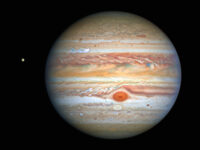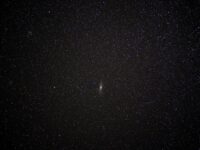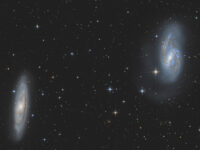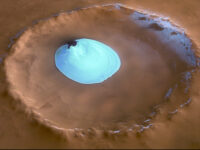An apocalypse: the end-all-be-all of Earth as we know it. Various pieces of literature and films have attempted to capture the concept, fueling a fear of the end of the world. Suitably, the collapse of society is quite frightening and not easily acceptable. For centuries, humans have tried to rationalize and control this unease through means of religion and theories about the future. But what if this type of disaster were to actually happen? What would happen to the many species that coexist on this planet? What if this large-scale disaster were preventable? Movies and television attempt to answer these questions through hypotheticals and visualizations of ominous futures.
“Don’t Look Up,” a movie recently released on Netflix, encapsulates a type of apocalyptic event that many deem plausible: an asteroid destroying the Earth. The movie opens with Astronomer Dr. Randall Mindy (Leonardo DiCaprio) and graduate student Kate Dibiasky (Jennifer Lawrence) locating a large asteroid in the solar system. After analyzing the comet, they come to the horrifying conclusion that it is undoubtedly headed towards Earth. It will make a direct hit, destroying Earth in the process, earning the name “planet-killer.” Unsettled, the two set out on a campaign to spread awareness, attempting to halt the demise of the world.
What course of action would we take if this situation were to actually play out? NASA’s Planetary Defense Coordination Office is responsible for detecting near-Earth objects (NEOs), which consist of all asteroids and comets that enter within a 30 million mile radius of Earth’s orbit. The most dangerous of this group are potentially hazardous objects (PHOs), which are specifically within 4.7 million miles of our planet and larger than 500 feet. Numerous small asteroids pass between Earth and the moon every month. Small pieces of asteroids under three feet in length, also known as meteoroids, go through Earth’s atmosphere practically every day, although most burn up or explode while doing so. However, an asteroid that is around 98 to 164 feet could result in far-reaching damage. What’s more, an object that is bigger than 500 feet would bring about global destruction, causing an “apocalypse,” so to speak.
An asteroid that is around 98 to 164 feet could result in far-reaching damage… an object that is bigger than 500 feet would bring about global destruction
However, according to NASA, “no known asteroid poses a significant risk of impact with Earth over the next 100 years.” In fact, the next asteroid that has the potential to collide with Earth has a 0.2 percent chance of impact and is not forecasted until the year 2185. NEOs are located using a variety of ground-based telescopes around the world with help from a few space-based telescopes. When a small object is found to be moving among mostly motionless stars, its orbit is predicted. This calculated value is then used to speculate when the object will be visible to telescopes again, thus allowing scientists to track the NEO.
Should a NEO be on a straight track towards the planet, a few technologies could be utilized. The most well-understood and simplest method would be a kinetic impactor: a spacecraft whose purpose is to ram into the hazardous asteroid in an attempt to (even slightly) knock it off its trajectory. It stands as the most realistic technique, and the strategy NASA would refer to first in a potential impact event. Still, maneuvering a large catastrophic-level asteroid to head in a completely different direction is a monstrous task. So monstrous, in fact, that scientists will be testing this approach’s reliability and effectiveness through the Double Asteroid Redirection Test (DART) in 2022.
The next asteroid that has the potential to collide with Earth has a 0.2 percent chance of impact and is not forecasted until the year 2185.
The tactic for asteroid obliteration seen in “Don’t Look Up” includes the launching of missiles. Although this may seem like a logical endeavor, NASA claims “nuclear explosive devices methods are considered the last resort when it comes to NEO deflection.” If the warning time of impact were too short, or the asteroid itself was very large, then nuclear devices would be the best option. However, the likelihood that an asteroid this enormous would hit Earth in the next 100 years is slim to none.
So, could humanity intercept an asteroid and put off an end of the world incident? Yes, probably. But as seen in “Don’t Look Up,” not everything ends pleasantly, and scientists’ opinions are shoved aside and replaced with politics and personal agendas. Yet, as technologies advance and limitations are surpassed, NASA, in collaboration with many other research centers, will continue to perfect their techniques. This way, their reports will be more accurate, allowing them to act efficiently and carry on with their duties.






